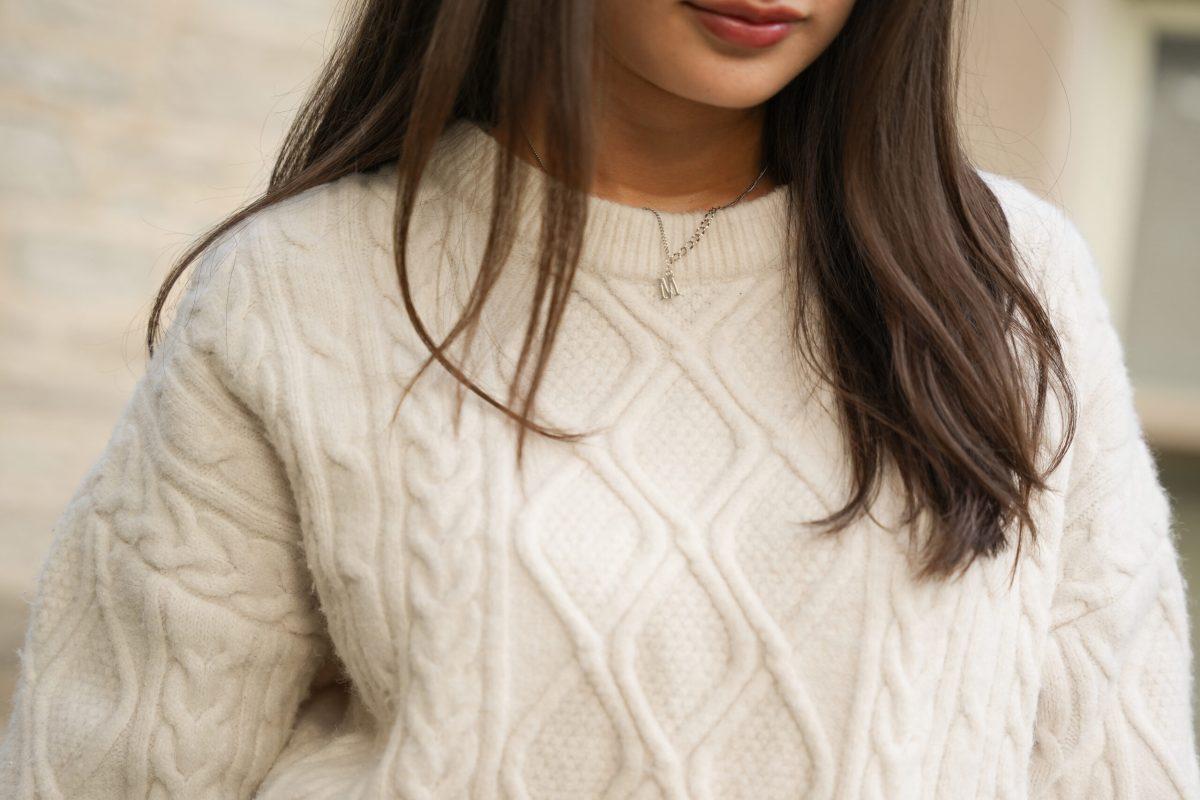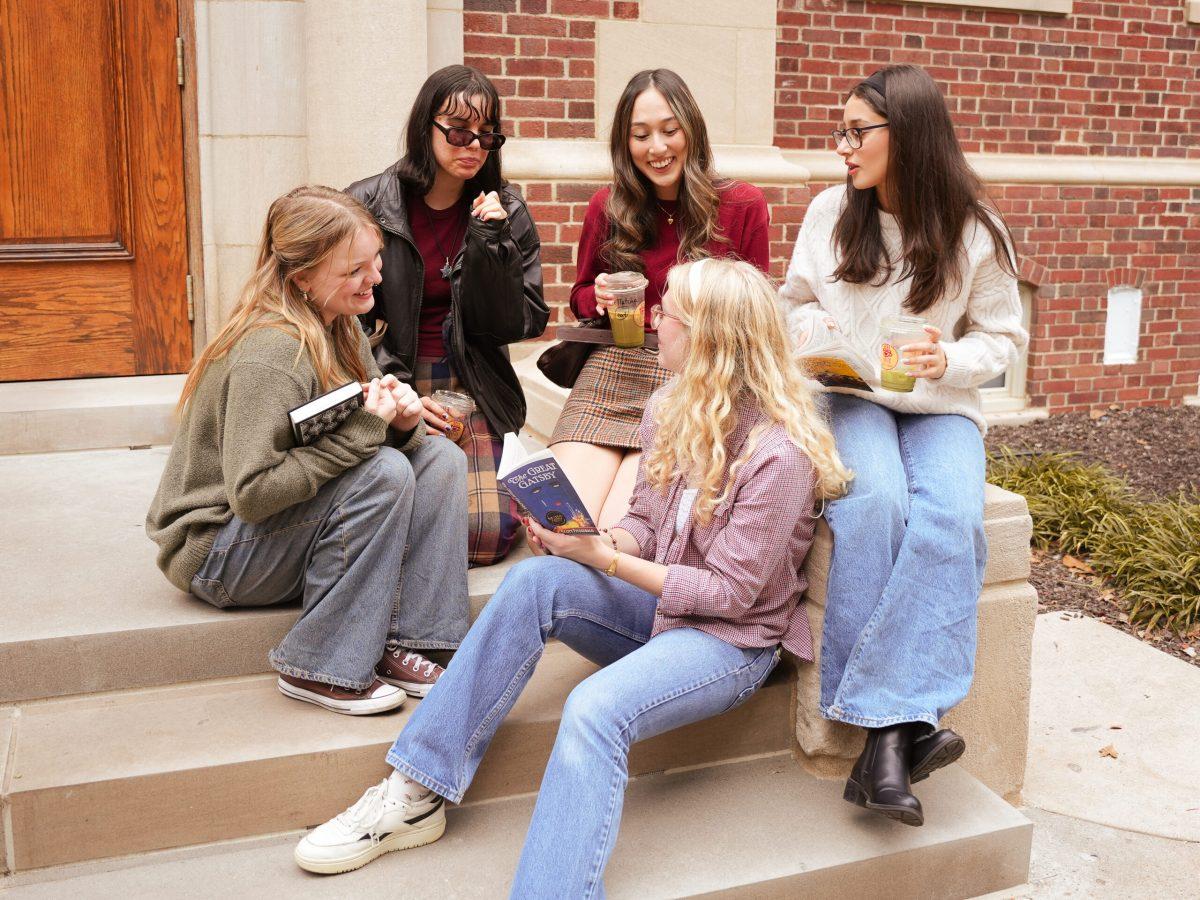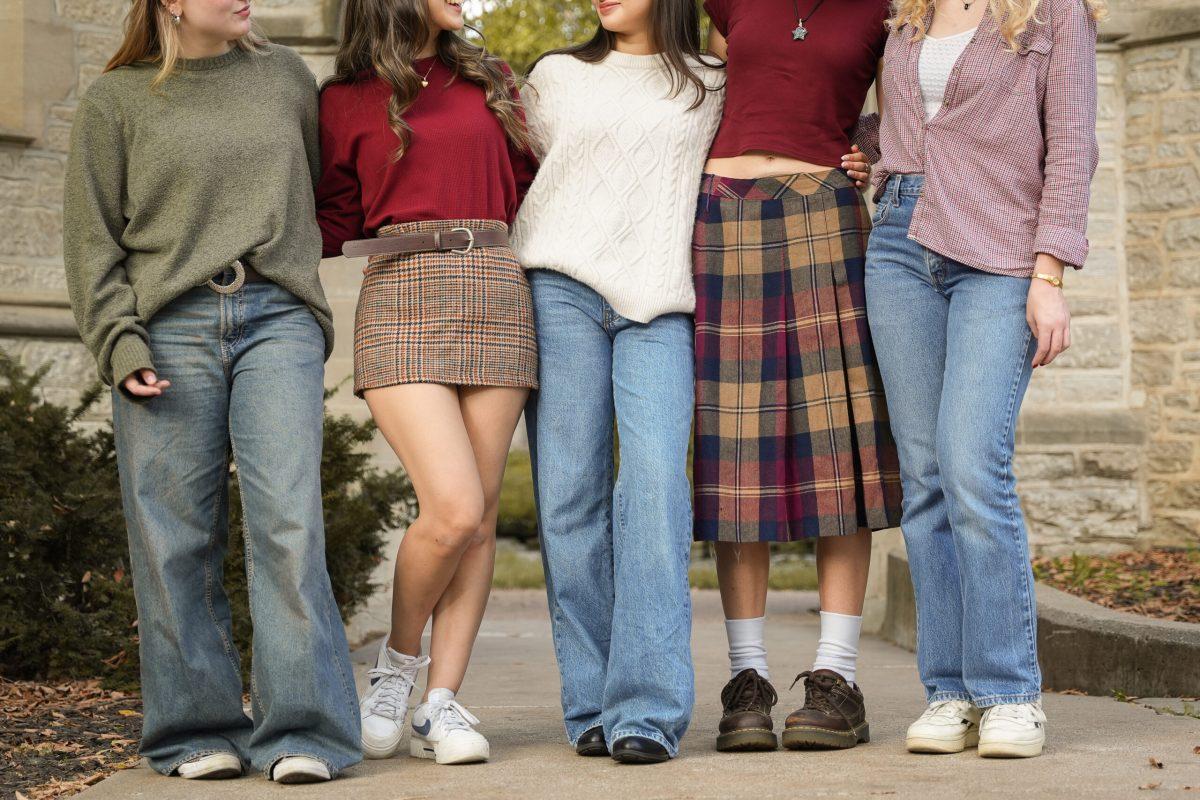
Lauren Replogle holds a coffee cup on Sunday, Sept. 29, 2024 at Lakota Coffee Company in downtown Columbia.
24 years later, “Gilmore Girls” persists as a relevant and recurring fall staple show for every household.
On Oct. 5, 2000, women aged 18-34 set network records watching the “Gilmore Girls” pilot. Conveniently premiering in the coziest month of the year, the strong, abundantly female cast stunned audiences with their refreshing authenticity, likability and novelty.
“Gilmore Girls” follows 16-year-old Rory Gilmore, played by Alexis Bledel, and her single mother Lorelai Gilmore, played by Lauren Graham as they navigate a new chapter in their lives. Audiences appreciated the freshness of the show, featuring settings, characters and themes not typically seen.
Branching off the stereotypical places of teen shows- “One Tree Hill” (2003-2012) is set in a coastal town in North Carolina, “Lizzie McGuire” (2001-2004) lives in New York City, as does the cast of “Gossip Girl” (2007-2012). Viewers are placed in Stars Hollow, Connecticut, a setting different from what is typical for a teen show of the time. Stars Hollow is claustrophobic and full of an eclectic ensemble cast of wacky residents, adding to its charm.
Our protagonist is starkly different from the norm. Rory Gilmore is an often antisocial bookworm who prioritizes her goal of going to Harvard over popularity or outings with friends. In any other show, Rory would be the outcast best friend or side character. This causes the show to appeal to women in transitional periods of their lives like high school and college.

Maya Bensaoud models ‘the Rory Sweater,’ worn in the pilot episode.
The pilot begins with a huge hit for the time: “There She Goes” by The La’s. Beloved amongst indie circles in the ‘90s and 2000s, this song choice lets audiences know that this isn’t a show for the mainstream. Other songs of the time featured in the show include Yo La Tengo’s “My Little Corner of the World,” Big Star’s “Thirteen” and Mazzy Star’s “Fade Into You.”
Speaking of, the show famously transitions its scenes with delightful guitar strumming and a variety of “la la la’s,” composed and sung by Sam Phillips. The ‘micro-songs’ have been parodied on TikTok, deeming autumn ‘la la la la la weather.’ They can be dreamy or more melancholy depending on the goings-on in the show; the transitions have become a character of the show itself.
Created and directed by women, “Gilmore Girls” employs more unique storylines that can appeal to niche viewers. Ongoing conflicts include family dynamics and the stark difference in Lorelai and Rory’s close, sister-like bond compared to the relationship between Lorelai and her mother, Emily Gilmore. Rory also has many love interests throughout the seasons – as she matures, her choice in boyfriends does as well.
What stands out the most throughout the series is the seasonal aesthetic that makes the show so incredibly rewatchable in the fall and winter seasons. Crunchy red and yellow leaves scattered throughout campus; the return of pumpkin spice and cinnamon apple crisp flavored drinks and the air getting chilly enough for long sleeves envelopes the atmosphere of the series.

MOVE staffers gather outside of Neff Hall.
Rory’s wardrobe is made up of romantic and academia styles. She employs autumnal shades, oversized sweaters, preppy layering, scarves, wool, tights and the obvious plaid in her school uniform which conveniently fits the tone.
Lorelai’s fashion sense is much more playful. In Season 1, Episode 2: “The Lorelais’ First Day At Chilton,” Lorelai infamously runs late for Rory’s first day at her new private school. Being laundry day, she introduces herself to Rory’s teachers in a pink tie-dye baby tee, cut-off jean shorts and cowboy boots. Across the seasons, she wears graphic band tees, bandanas and obnoxiously loud colors and textures, as well as more casual clothes fit with a hoodie or jacket. She holds onto her rebellious youth roots in her style, able to effortlessly balance clashing patterns and tacky accessories.
Lorelai and Rory are on the opposite sides of the spectrum when it comes to ‘90s and 2000s fashion, both incredibly iconic and timeless. You can see these trends from the show persisting today with an abundance of accessories like headbands, ribbons, and statement belts to chunky brown boots, black tights for fall weather and low-rise jeans and midi skirts. To really ‘Gilmore-ify’ your outfit, complete the look with a to-go coffee cup or a classic novel in your hand.
To loop back to music, the show’s theme song “Where You Lead” was written in collaboration by Carole King and Toni Stern. The song professes: “Where you lead, I will follow anywhere that you tell me to,” an obvious allusion to the special mother-daughter relationship the show revolves around. The song is about sisterhood and relationships between girls. It is the perfect beginning to every episode of a series about the people and the way we love.
Autumn is a very transitional time for students: moving to college and being away from home — some for the very first time. The leaves changing colors and the air growing chillier is all remarkably metaphorical and easy to romanticize.
The themes of community, friendship and childhood hit home to college students during the fall, and Gilmore Girls gives us a place to bask in these feelings.

From left, MOVE Staffers Ava McCluer, Alyssa Royston, Maya Bensaoud, Ellie Coalier and Lauren Replogle.
The episode that best illustrates the timelessness and impact of “Gilmore Girls” is Season 2, Episode 4: “The Road Trip To Harvard.”
After a breakup, the mother-daughter duo jump in their Jeep and drive to Rory’s dream school- Harvard. While diverting away from the homey aura of Stars Hollow, the themes of womanhood shine through in this episode. The girls banter all the way to Cambridge, Massachusetts, joking about Lorelai’s disastrous love life and arguing over Rory’s insistence in using a map instead of using solely a ‘sense of adventure’ to get to their destination. The witty pair manage to sneak David Lynch references into arguments that, while silly, showed women at the time that being well-read and educated were admirable qualities.
In their element, Lorelai skims the Harvard community board in a – you guessed it – baby tee. Rory wanders into a lecture hall, blowing the class away with her opinions on fatalism.
“So, we’ll probably see you at the Phi Alpha Beta thing tomorrow?” Lorelai asks students in a residential hall, also pretending to be a student.
The girls giggle both about the silly schemes they pull on campus and reminisce about their time living together running to an end – perfectly relatable to college students missing home.
“Every time I leave town, even just for a little while, I always expect everything to look different,” Lorelai remarks as they pull into Stars Hollow.
“And it never does,” says Rory.
As the ‘la la la’s’ roll in to close out the episode, the overwhelming impact of “Gilmore Girls” is abundantly clear. We will continue to look to the women of Stars Hollow, forever replicating and reflecting their perennial fashion and music taste, continually hoping to one day match their intelligent bantering abilities. Where the Gilmore women lead, we will follow.
Edited by Molly Levine | [email protected]
Copyedited by Stella Thrift and Natalie Kientzy | [email protected]
Edited by Emily Skidmore | [email protected]